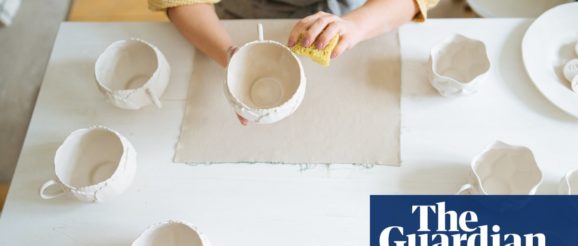How crafts are fusing tradition with innovation | Education | The Guardian

Jayne Childs wants to change the way we think about lace. “I’m challenging the perception of lace as just something we use for curtains,” she says. “Lace doesn’t have to be fusty and dusty. It can be something we wear in the 21st century – something that’s embedded in a tradition, but also looking forward. Even if people don’t really necessarily understand what that tradition it is, they like to tap into that story.”
The craft economy generates almost £3.4bn every year in the UK, much of it from craftspeople like Childs, who runs her own business creating wearable lace jewellery and gifts alongside studying part-time on the MA textile design innovation course at Nottingham Trent University. But offering craft skills at postgraduate level has a wider value too, says Nicky Dewar, learning and skills director at the Crafts Council. “These courses are an important opportunity to spend dedicated time exploring, thinking and challenging,” she says. “They bring skills, but also an opportunity for conversation and innovation.”
University subject profile: design and crafts
And they are also finding ways to keep local traditions alive. Nottingham Trent University’s fabric and fashion design call upon the area’s rich heritage in those areas. The city’s most famous export lives on in the Lace Market, and the university’s Lace Archive contains around 75,000 samples. Principal lecturer Sean Prince says interest has been on the rise in the last few years among both international and UK students.
“We’ve got an increase of mature students in particular, and many of those students are really connecting with that deeper level of research,” he says. “Many of our students go on to do PhDs – for example, one of our students is studying knitting and how it links to wellbeing.”
The research-driven course aims to get students challenging received wisdom and considering the future as part of their design responsibility, using all the different resources available, such as knitting machines and laser engraving. “We’re asking them to go beyond a normal fashion textile brief, and to be very clear about aims and objectives that link to specific research questions,” says Prince.
Forever in fashion: a tour of Naples’ finest arts and crafts makers
Traditional crafts are also being woven into new ways of thinking at Cardiff Metropolitan University, which has long been a centre for ceramics. The new MA ceramics and master makers course forges the university’s tradition of ceramics with a broader range of skills and materials such as wood, metal, enamel and glass. “We are problem finders and problem solvers,” says programme director Natasha Mayo. “It’s not all concept-driven. Our students come on the course because they understand that ideas are connected through skills. Skills are a catalyst for ideas, rather than the other way around.”
The course attracts students from all over the world: this first cohort has makers from Japan, American, Korea, India and Canada. “Their skills have strong cultural resonance,” says Mayo. “And this means that the vocabulary becomes even more layered and rich.”
It also looks beyond the local to the wider makers network, with frequent talks and demonstrations by successful practitioners, and visits to Wales’ many studios and factories. But it’s vital, says Dewar, that postgraduate courses don’t become the only pathway into crafts. “We have got world class courses and a booming creative industry, and the social benefits of crafts are only just starting to be recognised – yet they are pretty much disappearing from our schools. We need makers: people who ask how we can change society, as well as producing beautiful objects, and use their skills to make the world a better place.”
